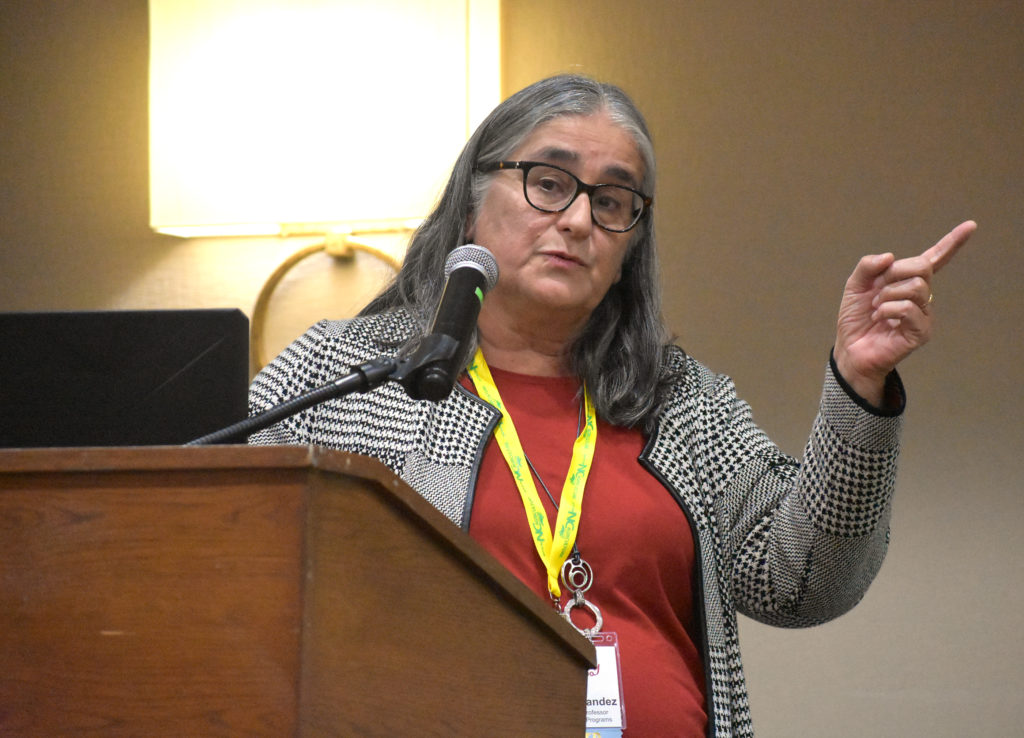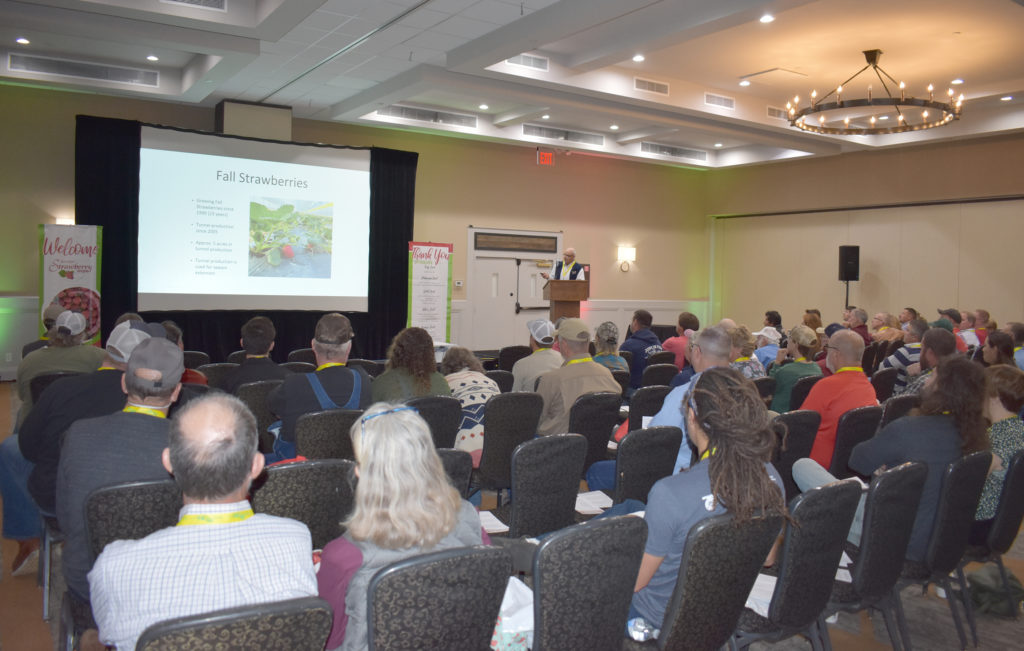By Clint Thompson
Most growers welcome the opportunity to learn from each other. That was never more evident than during the Southeast Strawberry Expo, held Nov. 9–11 in Asheville, North Carolina, and surrounding areas.

The annual expo provided an opportunity for the region’s strawberry producers to bounce ideas off each other and gather intel from industry experts about tools to refine their farming operations to be more successful in the upcoming season. Beginning farmers learned what to be wary of while trying to produce a strawberry crop in the mountainous region.
“In farming, you’re always learning something new every day. It’s good to come around and meet with other farmers,” said Anna Jackson, strawberry producer in Cameron, North Carolina. “Yes, we all do the same thing … but it’s very good to feed off of each other and get different ideas of what people do, how they do things and what works well for them.”
Doug Patterson, with Patterson Farms in China Grove, North Carolina, agreed with Jackson’s assessment. What works on one farm may work just as well on another.
“I think all of these winter conferences, and there’s a number of them, but particularly for the strawberry conference and strawberry industry, it’s important to see what other farmers are doing,” Patterson said. “We think we know everything, but it’s always good to see what other people are doing with the same issues that we have to deal with.”
VISITING FARMS
Austin Wrenn, president of the North Carolina Strawberry Association, represented Fresh Pik Produce and Wrenn’s Farm, located just east of Raleigh, North Carolina. He especially enjoyed the farm tour at the beginning of the expo. Attendees stopped at four locations across western North Carolina: Darnell Farms in Bryson City, and McConnell Farms, Obermiller’s Strawberry Farm and North River Farms, each in Hendersonville.

“The farm tour is my favorite part because you get to see what other people are doing in the real world out on the farm and interact with the other growers,” Wrenn said. “Every year, the expo seems to grow with more and more growers. Within strawberries specifically, we’re seeing a lot of new growers coming in. A lot of that is older growers that may have been in tobacco or field crops and transitioning out of those crops and looking for something else to add on. We’ve seen a lot of new growers, which is great for the industry to keep that growth coming on. I know a lot of other commodity groups are struggling to keep membership. Thankfully, we have not had that issue.”
DISCUSSING CHALLENGES
Karen Blaedow, NC State Extension agent in Henderson County, discussed the challenges that growers should be aware of if they consider pursuing strawberry production in the mountainous region. She said weather presents a challenge if there is a lot of rain in May.
“The berries are so perishable under rain,” said Blaedow. “The shelf life is just diminished. You have a lot of culls. It can be done, but it is risky.”
Blaedow noted that strawberry growers in Henderson County have small farms of just 1 to 6 acres. “I don’t know of any growers that have grown more than 6 acres in my county,” she said.
Another challenge growers should be wary of is botrytis, a common fungus in nurseries and in dying vegetation around fields.
“We see a lot of botrytis in rainy weather,” Blaedow said. Growers should keep weeds suppressed in their fields and be vigilant in applying fungicide sprays every week.
A production issue that some growers have had this year is late plantings. Supply-chain issues contributed to producers not receiving their plants until much later than normal. That created some unexpected headaches for those affected.

“There’s been a lot of late plantings,” Wrenn said. “That is a topic that we covered at the expo — how to manage that to still get a good crop next year.”
STAYING CURRENT
Other topics during the two-day educational session highlighted the current strawberry breeding program conducted at NC State University; growing strawberries without fumigants; adding caneberries to your farming operation; and a strawberry disease update from Bill Cline, NC State Extension specialist. Wrenn also discussed the fundamentals of greenhouse strawberry production.

“In our industry, things are changing almost on a daily basis. About every year, there’s a new disease or pest problem that’s causing some issues for growers,” Wrenn said. “We’re looking at new production practices, new equipment and new technologies. The industry is changing very rapidly. If you don’t stay up with it, you could get left behind. It’s just a great time to meet other growers and talk to people that are in the same situation as you.”









